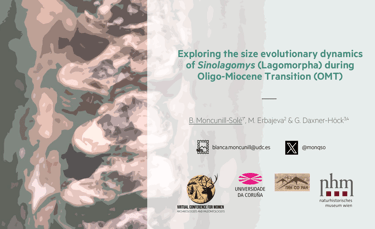
Sinolagomys and the Oligo-Miocene transition (OMT)
Searching clues for understanding the persistence of Sinolagomys during this climatic event.
CONGRESSESRESEARCH
3/21/20241 min read


Last week, I had the pleasure to participate with an oral presentation to the 4th Virtual Conference for Women Archaeologists and Paleontologists (promoted by the Association for Early-Career Women Archaeologists and Paleontologists). In it, I presented the preliminary results in the study of the body mass evolution of Sinolagomys.
Sinolagomys was an extinct ochotonid that lived during the late Oligocene and early Miocene in Central Asia, particularly in North China, Mongolia and Kazakhstan. A total of 7 species have been described: Sinolagomys badamae, S. gracilis, S. kansuensis, S. major, S. pachygnatus, S. ulungurensis and S. tatalgolicus. In these Mongolian environments, these species coexisted with a lot of other lagomorphs (e.g., Desamtolagus, Ordolagus, Bellatona, Alloptox, etc.) and micromammals. However, Sinolagomys was the only lagomorph that persisted the faunal turnover that occurred following the Oligocene-Miocene transition (a cooling climatic event)? Which were the traits of these species that made it so special?
One of my research lines is focused on understanding the persistence and biological shifts of lagomorphs in front of climate changes. In the present study, we analyzed the fluctuations of body mass that this genus experienced, and correlated them with some biotic and abiotic factors. If you want to know more, here you can take a look to the abstract book: link. My study is in the page 80! Questions and suggestions are more than welcome.


